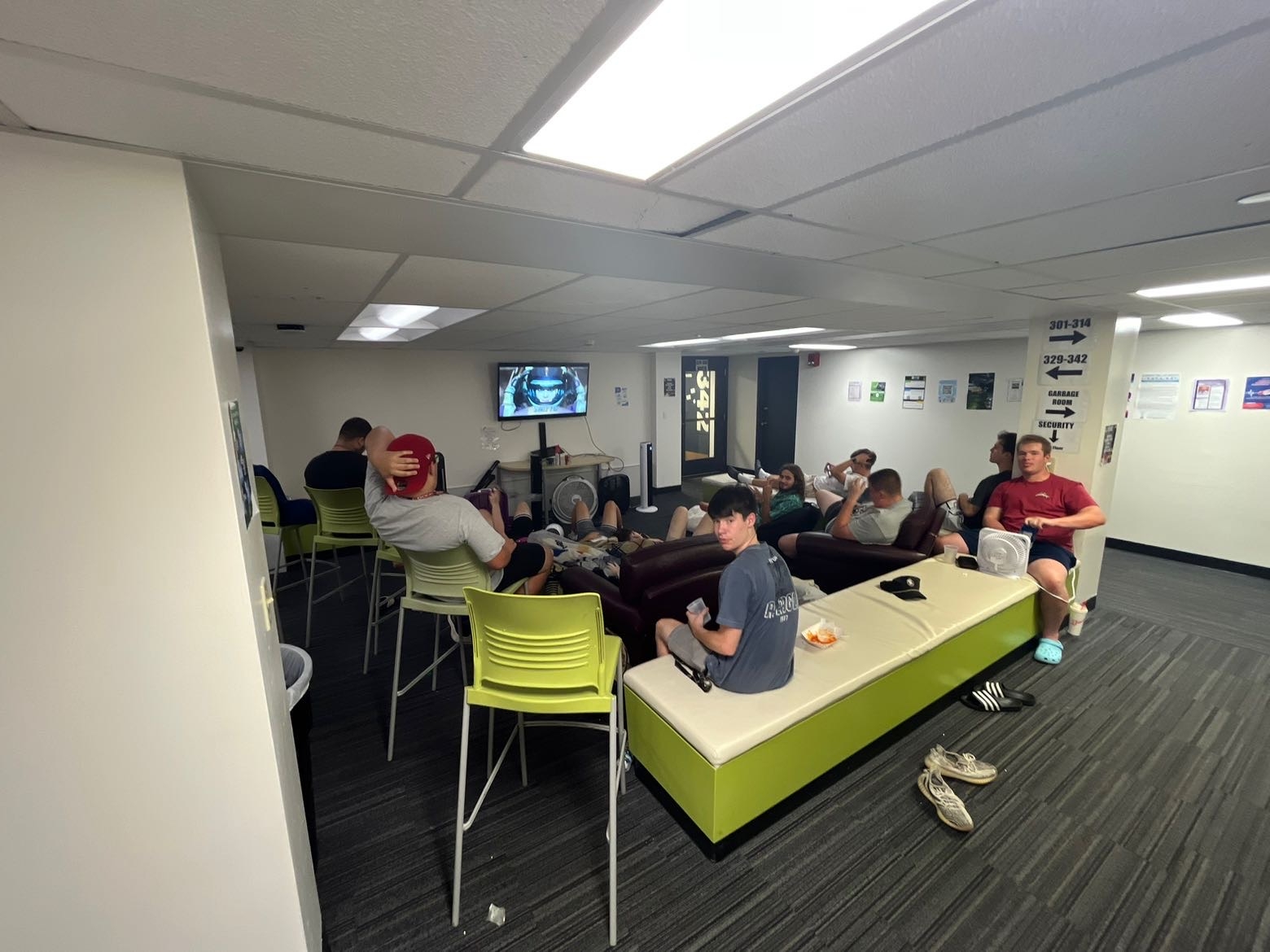BY PAYTON SEAROR, CONTRIBUTING WRITER
photo courtesy of Payton Searor
St. Bonaventure University fortunately hosts vibrant communities within its dorm halls.
However, my initial weeks on campus have shed light on both the positive and negative aspects of residence life and floor communities.
Sep. 7 marked the NFL regular season opener with an intense match between the Detroit Lions and the reigning Super Bowl-champion Kansas City Chiefs. Despite the warm evening in campus dorm halls, excitement filled the second-floor lounge of Falconio Hall as the game progressed, reaching its peak when the Lions triumphed over the formidable Chiefs. Despite occasional loneliness over my initial few weeks on campus, coming together to watch a beloved sport provided a sense of belonging.
My conversations with residents, such as Jameson Zuber from Robinson Hall’s third floor, explored the dynamics of these communities and the overall inclusivity within each hall. Zuber described to me a typical hangout in “Robinson 3”: an unorganized, fantastic time.
From my outside perspective, Robinson 3 can be extremely vibrant at best and a disruption felt across campus at worst. But Zuber and I agree that a dorm hall is more than just rooms and a TV.
I find that these communities can be a source of happiness for all residents, often sharing in communal activites. These communities are built around shared interests. These interests become disruptive for certain individuals, and they can cause significant disruptions within the broader Bonaventure community when they gather in large numbers.
It’s not uncommon for students to feel excluded from their communities. Kayla Felder, a resident of Doyle Hall’s fourth floor, expressed to me a lack of communal camaraderie compared to other floors. This observation isn’t about blaming resident assistants or reserved students but has various causes.
Nevertheless, residents in dorm halls often find themselves isolated within their campus homes.
Floor communities within college residences have their pros and cons. On one hand, they provide a sense of belonging and camaraderie, fostering social connections and a support network for students navigating their academic journey. Shared experiences and common interests often form the foundation of these communities, leading to friendships and memorable interactions.
On the other hand, these communities can inadvertently exclude certain residents, making them feel isolated and disconnected. A balance between inclusivity and celebrating shared interests is a challenge, and ensuring that every resident feels welcome and valued is crucial for maintaining a healthy and vibrant floor community.
searorpl23@bonaventure.edu






